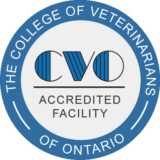Download PDF Version
Milk Cultures – Why Do We Do Them?
By: Dr. Mike Scolaro

Not all mastitis is the same. Depending on the bacteria that is causing mastitis, the antimicrobial intramammary therapies available will be ineffective or cause harm to the udder. These cases are impossible to differentiate with the naked eye. The way we can tell the difference is with culture. Up to 50% of cases of mastitis do not benefit from using a mastitis tube.
If you are looking for maximum return on culture results, a quick turnaround time advising treatment is crucial. There are a few results that our in-house lab can produce within 36 hours.
TREAT: These bacteria are susceptible to Cefa Lak, Spectramast LC. They belong to the gram-positive family of bacteria including Staphylococcus (staph), Streptococcus (Strep) and some other species of bacteria.
NO TREAT: These bacteria are not susceptible to available mastitis tubes and cows can handle mild to moderate cases of these mastitis without intervention. These include E. coli, Klebsiella and other gram-negative bacteria.
NO TREAT (No Growth): If the sample has been collected and handled appropriately, no growth indicates that the cow has mounted an appropriate immune response and killed all of the bacteria in the udder. As she has already ‘won the fight’ against the infection, she does not require any mastitis tubes.
 Let’s use a scenario as an example. We will make the following assumptions:
Let’s use a scenario as an example. We will make the following assumptions:
Approx. Milk value at farmgate sale: $1/L
Mastitis treatment cost (2 tubes): $16
Cost of culture: $26.80 after tax
Proportion of mastitis cases that do not need/benefit from mastitis tubes: 50%
Average milk production (Ontario average) ~30 litres per day
If this cow develops mastitis, and we decide to treat without culture, we must exclude her from the tank for 2 days of treatment and 96 hours of milk withdrawal. This cost of treatment is the cost of therapy ($16) plus 6 days of milk discarded (6x30L=180L). This case now costs $196 and we don’t even know if it’s been worth it to spend this money.
If we instead collect a sample and submit it for culture, stripping the affected quarter out while we do so, we incur the cost of culture – $26.80. We also incur the cost of discarded milk while waiting for culture results, at a cost of $30 per day. We don’t immediately incur any treatment costs or milk withhold costs. The odds a sample comes back as NO TREAT (50%) can be used to see our expected cost.
26.80 + 0.5x(16+(6×30)) = $124.80 This is $71.20 less than treating every case. So, for the additional cost of culturing on average $71.00 is saved!
Cleanliness Contest!
Cleanliness is an important aspect of calf rearing. From colostrum to feeding equipment, hutch surfaces and everything in between, hygiene is a key determinant of calf health and vitality. Have you ever wondered how the cleanliness practices in your herd are impacting your calves? Wait no longer because the team at UGVS has a way to answer that!
We use a luminometer to measure bacterial activity on a surface. This device can return results within 15 seconds on how clean something is. We have been surprised time and time again, with how seemingly clean surfaces can actually be incredibly contaminated with bacteria. This surprise has led us to believe that this is a very useful and important aspect of calf rearing to assess on a regular basis. We also think that it’s a great way to have a fun competition within our community to benefit our clients.
The Rules are Simple!
1) Contest Begins on May 15, 2023, and closes on June 30, 2023 – there has been an extension!
2) Book a calf hygiene appointment, and have your cleaning method audited and the end result assessed with the luminometer
3) Submit the cleanest calf feeding bottle that you have for entry into our contest – We will test it and record the score.
4) Cleanest bottle wins a $100 credit on their account or a $100 Tim Horton’s gift card. The winner also agrees to share their bottle-washing protocol to be included in the next UGVS newsletter!
Control of Gastrointestinal Parasites in Sheep & Goats
By: Dr. Angela Cranmer
With pasture season upon us, now is an excellent time to revisit your flock’s parasite control strategy. Parasites can cause several issues in your flock including decreased body condition score, production losses, and even death in severe cases.
When designing a parasite control program for your flock it is important to know that all sheep/goats will carry some intestinal parasites.

It is impossible to eliminate all parasites from the environment, and attempting to do so through blanket treatment will result in a residual parasite population that is resistant to the dewormers used. Fortunately, parasite populations can be managed with other strategies such as pasture rotation, monitoring parasite resistance (see below), and avoiding over-crowding.
Inevitably, some individual animals will require treatment despite our best efforts to otherwise manage parasite burdens. In order to determine which animals require treatment, the Five-Point Check is used. It is straightforward, but best performed for the first time with your veterinarian. There are 5 points that are scored (for more information, see our 5-Point Check factsheet):
- Body condition score
- Dag score (diarrhoea)
- FAMACHA score (inner eyelid colour)
- Jaw score (swelling)
- Hair coat quality (goats) or Nasal discharge (sheep)
Appropriate dewormer is one that is tailored to the health history and circumstances of the flock. Speak with your veterinarian for advice on what product is best for your farm.
Faecal egg count reduction test (FECRT): Faecal samples are collected from a subset of the flock prior to treatment and again 10-14 days later. Parasite eggs are counted and compared in both samples. The reduction in eggs indicates levels of parasite resistance to the anthelmintic (dewormer):
> 95% reduction = dewormer effective
< 95% reduction = anthelmintic resistance present
<65% reduction = dewormer not effective
Co-op Student Testimonial – By Mary Brander
For those wondering who I am, I was born and raised on a dairy farm just outside of Rockwood. I have wanted to be a vet ever since I was a young girl. Every time Dr. Rob would come to our farm, I would run out as fast as I could to watch him palpate a cow or do surgery, or better yet, a postmortem! I am passionate about farming and agriculture, and my goal is to become a large animal veterinarian. My CO-OP with UGVS has helped me decide that I will go to vet school after my degree in Animal Science, which I will be taking this fall at the University of Guelph.
 So far, I have really enjoyed my experience, and I appreciate all the support and acceptance of the producers I have visited. It has been great to meet local farmers and learn more about the industry and what vets do daily.
So far, I have really enjoyed my experience, and I appreciate all the support and acceptance of the producers I have visited. It has been great to meet local farmers and learn more about the industry and what vets do daily.
Throughout my CO-OP, I have learned some valuable skills. Firstly, I have learned a lot about different illnesses and diseases that affect food animals, along with their treatments and prevention. I have also learned that to be a vet, you must be very flexible and resilient. All vets get difficult calls, and they must have the right attitude and mindset to keep going, rather than being disheartened. Also, vets have to balance a lot of things on their plates, including their own lives, so being able to be flexible is also important too. I am extremely grateful to UGVS for giving me this opportunity to learn and gain experience, and I am very excited about what the future holds!
“If you have any questions on these or other topics, please do not hesitate to contact one of our Veterinarians.”

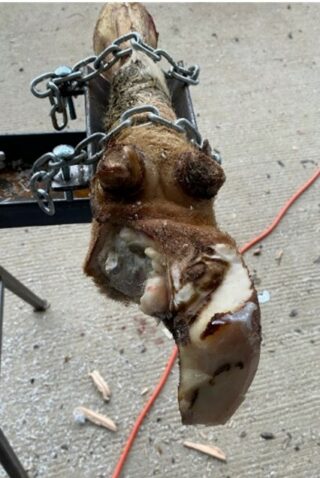 This past month, Dr. Megan travelled to Knoxville, Tennessee to attend the AABP Recent Grad Conference and participate in a preconference seminar covering bovine lameness treatment and protocols. Here are a few of the important takeaways:
This past month, Dr. Megan travelled to Knoxville, Tennessee to attend the AABP Recent Grad Conference and participate in a preconference seminar covering bovine lameness treatment and protocols. Here are a few of the important takeaways: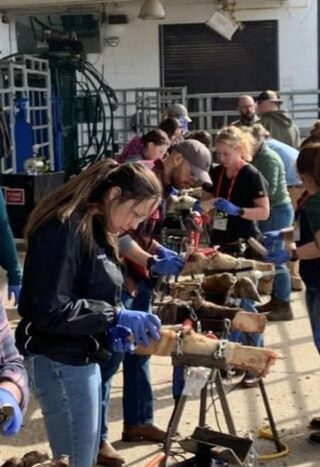
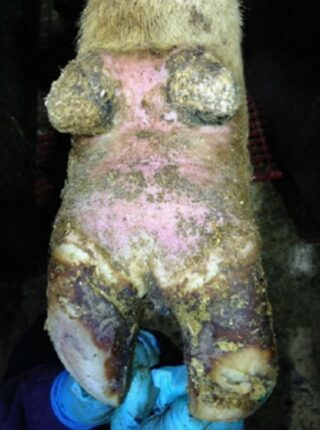

 Are you following us on Facebook?
Are you following us on Facebook?

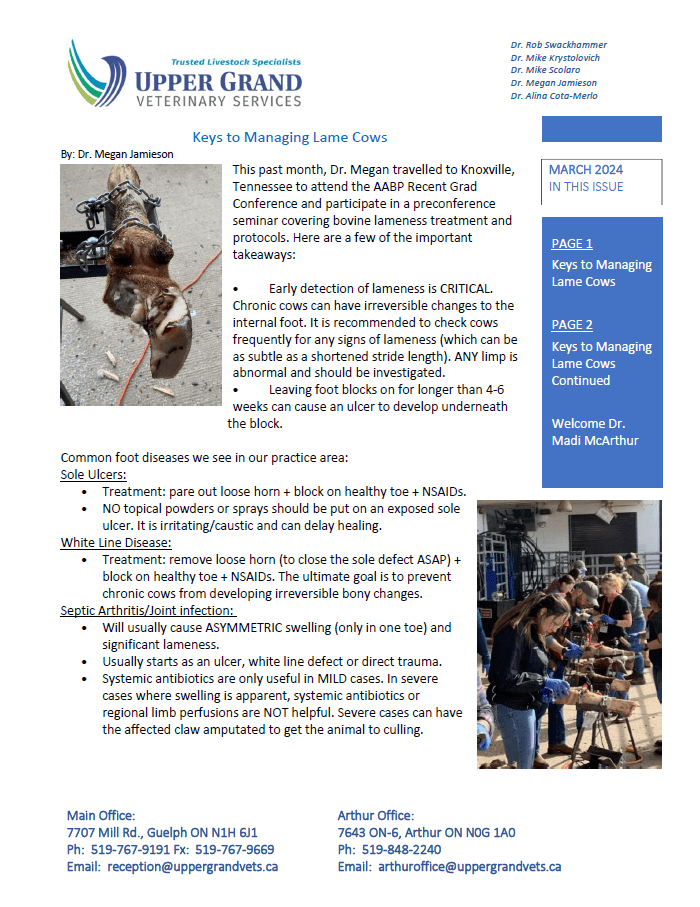
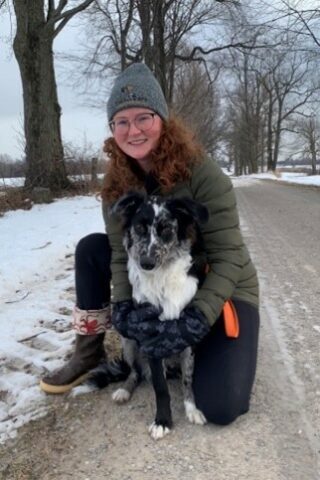
 Are you following us on Facebook?
Are you following us on Facebook?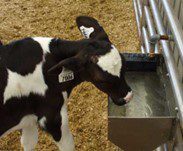
 Cyber Security
Cyber Security the less. Other potential disasters include shutting off fans in poultry barns, disabling online generators, and anything that has a web access on the farm.
the less. Other potential disasters include shutting off fans in poultry barns, disabling online generators, and anything that has a web access on the farm.
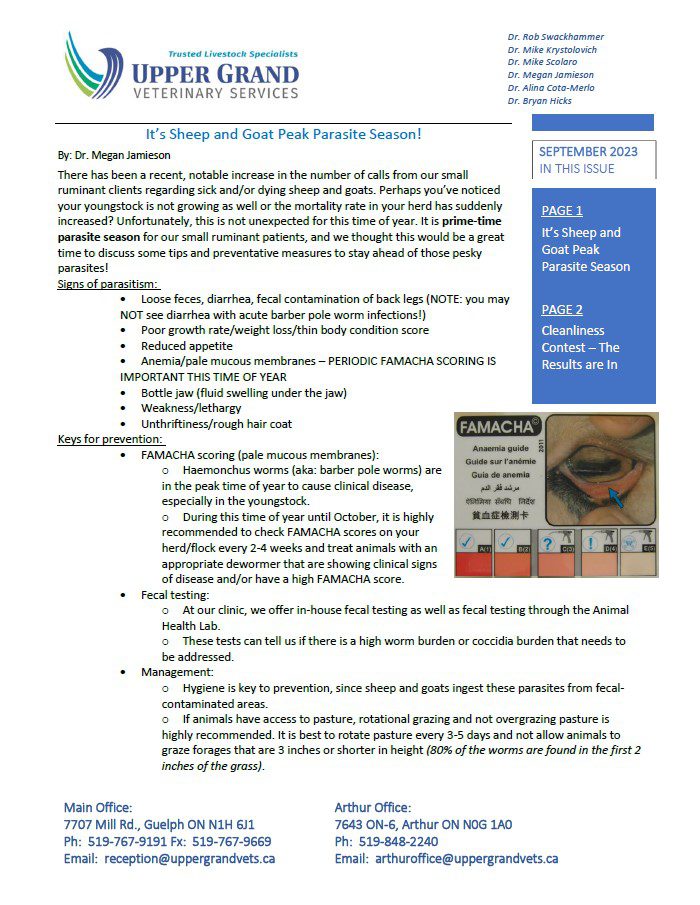
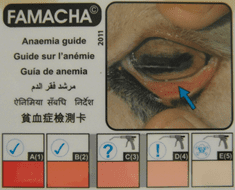

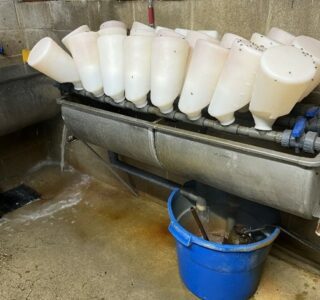 Our contest winners are the team at Spruit Holsteins in Alliston! Peter and Kathleen have created a homemade bottle washer. First, bottles are rinsed inside and out with warm water. Then, they are washed with hot water and bleach, followed by a hot water rinse. This system allows for the inside of bottles to be thoroughly sprayed and have good contact time with the cleaning agents before being dried. Calves are fed from these bottles before they are put in a group pen and fed by an automated feeding system. Peter is emphatic that good hygiene is important, and more achievable than we sometimes think. “You don’t need to spend thousands of dollars on a purpose-built bottle washing system,” he says.
Our contest winners are the team at Spruit Holsteins in Alliston! Peter and Kathleen have created a homemade bottle washer. First, bottles are rinsed inside and out with warm water. Then, they are washed with hot water and bleach, followed by a hot water rinse. This system allows for the inside of bottles to be thoroughly sprayed and have good contact time with the cleaning agents before being dried. Calves are fed from these bottles before they are put in a group pen and fed by an automated feeding system. Peter is emphatic that good hygiene is important, and more achievable than we sometimes think. “You don’t need to spend thousands of dollars on a purpose-built bottle washing system,” he says.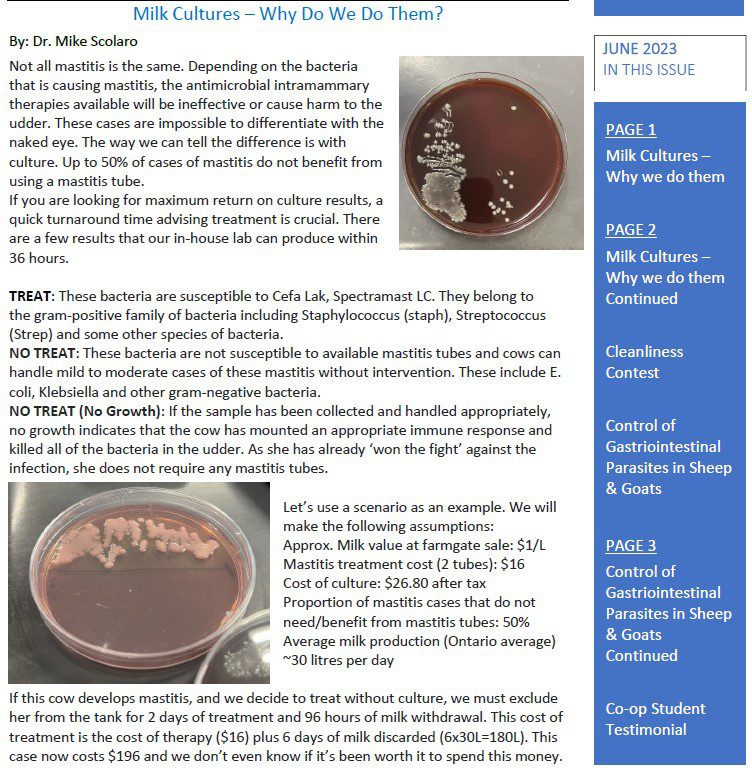
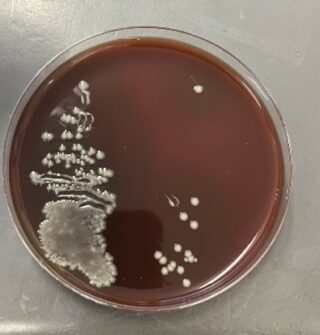
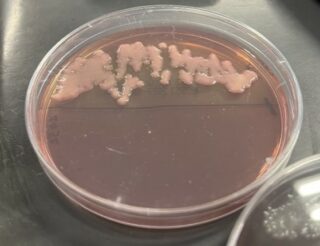 Let’s use a scenario as an example. We will make the following assumptions:
Let’s use a scenario as an example. We will make the following assumptions: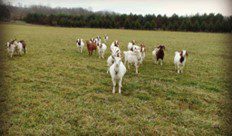
 So far, I have really enjoyed my experience, and I appreciate all the support and acceptance of the producers I have visited. It has been great to meet local farmers and learn more about the industry and what vets do daily.
So far, I have really enjoyed my experience, and I appreciate all the support and acceptance of the producers I have visited. It has been great to meet local farmers and learn more about the industry and what vets do daily.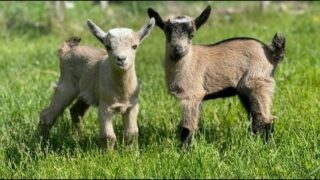 If lambs are being tail docked, we highly recommend doing this before 1 week of age.
If lambs are being tail docked, we highly recommend doing this before 1 week of age.
